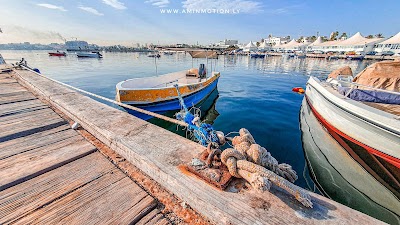Gurgi Mosque (مسجد قرجي)
Overview
Gurgi Mosque: A Historical Gem in Tripoli
Situated in the heart of Tripoli's old medina, Gurgi Mosque stands as a remarkable architectural landmark that reflects the city's rich history. Commissioned by Mustafa Gurgi, a prosperous Turkish merchant, the mosque was built in the early 19th century, with its completion often celebrated in 1833. Gurgi envisioned a place of worship that embodied both grandeur and intricate beauty, and this vision is beautifully realized in the mosque’s design.
Architectural Marvel
The mosque is a stunning example of Ottoman architecture, harmoniously blended with local styles and materials. Its exterior features elegant white marble, while the intricate detailing showcases the exceptional craftsmanship of artisans from that period. Although smaller than some other historical mosques, Gurgi Mosque stands out due to its sophisticated decor and structural symmetry, inviting admiration from all who visit.
The Majestic Minaret
One of the mosque's most striking features is its minaret, which offers breathtaking views of the surrounding old city. Adorned with geometric patterns and inscriptions, the minaret exemplifies the exquisite craftsmanship of the time. Each level, from the base to the pinnacle, is intricately detailed with carved marble and stunning tile work, making it a focal point of the mosque's architectural charm.
Serene Interior
Stepping inside Gurgi Mosque, visitors are enveloped in a richly decorated environment. The walls are adorned with ornate mosaics and Arabic calligraphy, meticulously crafted to foster a serene and spiritual atmosphere. Elaborate chandeliers and intricately carved wooden elements further enhance the mosque's aesthetic appeal. The prayer hall, furnished with traditional carpets and rugs featuring vibrant motifs, invites worshippers to engage in contemplation and devotion.
Educational Heritage
Gurgi Mosque also houses a medrese, an educational institution where Islamic scholars and students gathered to study religious texts and various academic subjects. This dual function of the mosque as a place of worship and a hub for learning highlights its importance in the community, fostering both spiritual growth and intellectual engagement.
Cultural Significance and Preservation
The collaboration between skilled artisans, who utilized locally sourced materials like marble, wood, and tiles, brought Gurgi's vision to life. The choice of materials and construction techniques not only enhanced the mosque’s beauty but also ensured comfort during the hot Libyan summers. Despite the passage of time, Gurgi Mosque has undergone several restoration phases aimed at preserving its original artistry and structural integrity, often involving local authorities and international cultural heritage organizations.
A Living Landmark
Today, Gurgi Mosque is cherished as one of Tripoli's prized landmarks, attracting both worshippers and tourists. Its serene ambiance, combined with its historical and architectural significance, makes it an essential stop for anyone exploring the city.
Community Connection
For the local residents, Gurgi Mosque symbolizes their cultural heritage and stands as a testament to their ancestors’ artistic excellence. The mosque plays a central role in community events and religious celebrations, reinforcing its status as a vital cornerstone of societal and spiritual life in Tripoli. This unique blend of history, architecture, and community engagement positions Gurgi Mosque as a distinguished monument not only in the Tripoli District but throughout Libya.







